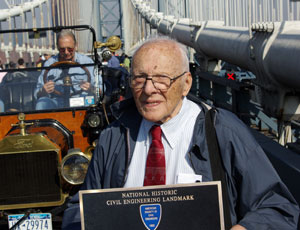Robert A. Olmsted, the first director of long-term planning for New York City’s Metropolitan Transportation Authority (MTA) and a transportation engineer, builder, historian and industry mentor for more than 60 years, died on Aug. 16 in Manhattan. He was 85.

Olmsted—a descendent of Frederick Law Olmsted, the landscape architect who designed New York City’s Central Park—began his own industry career in the late 1940s as a Cornell University engineering graduate on the Brooklyn Battery Tunnel. A protégé of Ole Singstad, the innovative structure’s chief engineer, Olmsted went on to work for other New York-area transportation agencies and on global engineering assignments for the former TAMS Consultants. After his MTA retirement in 1989, he continued as an industry consultant until his death. Olmsted taught urban mass transportation at several area universities for 30 years and was a prolific author. Jay H. Walder, an MTA veteran who was named by New York Gov. David Paterson to become agency chairman in 2009, credits Olmsted “for much of what I learned.”
Olmsted is a fellow of the American Society of Civil Engineers and, in 2006, recipient of its national civil engineering history and heritage award. He was instrumental in securing ASCE historic landmark status in 2009 for New York City’s Manhattan, Queensboro and Williamsburg bridges. “[Olmsted] really loved everything about the history of transit, the subway, the tunnels and transit bridges,” says Paul Roppa, a New York City Dept. of Design and Construction director and a committee chairman of ASCE’s metro New York chapter.





Post a comment to this article
Report Abusive Comment